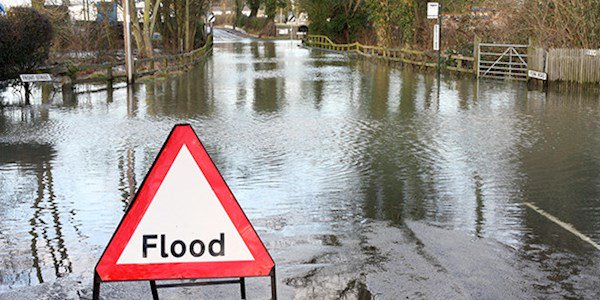Author: Andy Cotter

The change in weather patterns is bringing an increased risk of flooding in the UK, and one in six homes are now at risk of flooding1.
Records for daily rainfall were broken in 2020,2 the year when Storms Ciara and Dennis brought devastating flooding that affected many homes and businesses and, according to the Association of British Insurers (ABI), resulted in a total of 82,000 claims being made for flood and wind damage.3
The Committee on Climate Change (CCC), in a letter to the government that year,4 emphasised the need to plan for the challenges ahead and to support communities in doing the same.
For councils, this means protecting the people and places in their communities by better understanding the risk and preparing for it. In some cases, communities may need to adapt to future flooding and coastal change, and councils should also be instrumental in the strategic planning to support this.
We have outlined some of the key responsibilities for councils below and would welcome the opportunity to support you in this important area of risk management.
Lead Local Flood Authorities
Lead Local Flood Authorities (LLFAs) are county councils and unitary authorities and they lead in managing local flood risks. This includes ensuring co-operation between the risk management authorities in their area. Local authorities, the Environment Agency and emergency services are listed by the Civil Contingencies Act 2004 as ‘Category 1’ responders to emergencies.
Under the Flood and Water Management Act 2010, LLFAs are required to:
- Prepare and maintain a strategy for local flood risk management in their areas, coordinating views and activity with other local bodies and communities through public consultation and scrutiny, and delivery planning. They must consult risk management authorities and the public about their strategy.
- Carry out the necessary works to manage local flood risks in their areas, apart from works relating to minor watercourses, which is the responsibility of the district council or unitary authorities outside of Internal Drainage Board (IDB) areas.
- Maintain a register of physical assets that have a significant effect on flooding in their area (there is guidance from Defra here).
- Investigate significant local flooding incidents and publish the results of their investigations (for guidance, the British Standards Institute has developed BS 85600 for post-event flood assessments—you can see a preview here).
- Maintain and regulate ordinary watercourses (outside of internal drainage districts), including bridges and other structures in the watercourse.
- Undertake a statutory consultee role providing technical advice on surface water drainage to local planning authorities.
- Play a lead role in emergency planning and recovery after a flood event.
District and borough councils
District and borough councils are risk management authorities and can:
- Carry out flood risk management works on minor watercourses outside of IDB areas.
- Work in partnership with LLFAs and other risk management authorities to ensure risks are managed effectively, including in relation to taking decisions on development in their area.
Coastal protection authorities
District and unitary authorities in coastal areas are coastal protection authorities. They are responsible for:
- Leading on coastal erosion risk management activities in their area.
- Developing shoreline management plans (SMPs) which identify the most sustainable approach to managing the flood and coastal erosion risks to their section of the coastline in the short, medium and long-term.
Flood wardens—keeping your volunteers safe
A council’s employers’ and public liability insurance should provide cover for a flood warden scheme. Flood wardens can be individuals within the community, representatives of the parish councils or existing volunteers, for example, highway wardens.
Flood wardens are typically called upon once a flood warning has been issued and could be out in adverse weather conditions monitoring waterways, which means they are potentially operating in wet, uneven or slippery areas. The council should ensure this potential hazard is assessed and included in their risk assessment and safety guidelines provided to the flood wardens and any volunteers.
It should be remembered that any activity involving deep or fast-moving water remains the responsibility of the emergency services and/or the council’s resilience team.
Ensuring adequate cover for your flood resilience plans
There are four main approaches to flood resilience: resistance (keeping floodwater out of properties), recoverability (impact reduction), groundwater protection (prevent rising groundwater from entering a property from below) and community flood protection (e.g., a flood protection barrier along the edge of a river).
Sometimes, flood resilience activities can be carried out in extreme weather conditions or events such as power cuts, so if your council has or is considering implementing a flood resilience plan, you should seek appropriate advice.
How Gallagher can help
If you would like to speak to one of our risk management specialists about how we help you manage and mitigate flood risk to protect the communities you serve—and manage your own liabilities—please get in touch.



